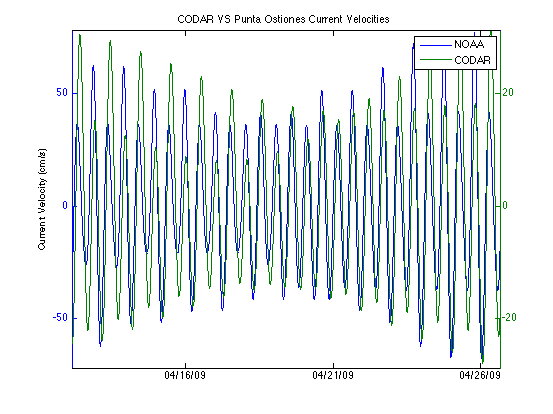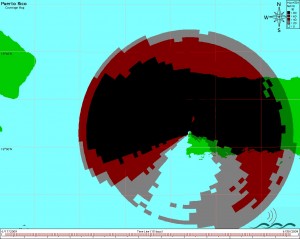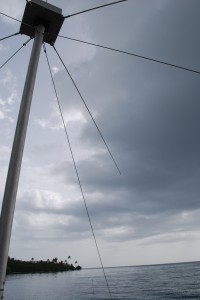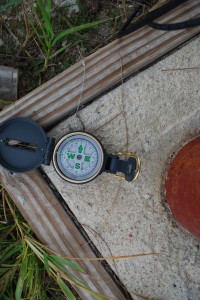-
Inland Data in the CDDO site
Posted on July 17th, 2009 No commentsCDDO site in Puerto Rico has been experiencing serious difficulties. As it can be seen on the picture below, the HF radar is gathering a great deal of inland data. This kind of data inhibits the effective mapping of currents, since SeaSonde software displays it as real affecting the product’s credibility and quality. This kind of problem prevents the system from being used as a rescue and emergency response tool. To try to solve this problem Damian Ruiz was contacted and asked to verify the bearing of the receiving antenna along with the connection of the cables. To our surprise everything seemed to be normal. In the photos it can be appreciated that the arrow for loop 1 is looking straight into the ocean as it’s suppose to be. Since everything appeared to be in order, our last resource is the antenna pattern measurement. This process requires experience as well as special instrumentation.
One hypothesis is that the signal is being amplified towards land by different communications devices in the marina. The other theory is that the southwestern part of the radar isn’t gathering any data because there might be something interfering with the signal such as metal towers, electrical cables, light poles, etc. -
Correlation Between NOAA Predicted Currents and CODAR Observed Currents
Posted on July 17th, 2009 No commentsAn effective correlation can only be carried out in Matlab if both data sets have the same length (same amount of data points), therefore both time series – NOAA predicted currents at Punta Ostiones and CODAR observed currents – were subjected to the Fast Fourier Transform method and subsequently interpolated at 1-minute intervals. Then data was analyzed and plotted within the same period of time – April 1, 2009 to May 31, 2009. Correlation was performed using corrcoef function, which yielded a value of 0.69. It is worth noting that the algorithm is now set to calculate M2, S2, N2, K2, K1, O1, P1, Q1 tidal constituents as advised by Dr. Jorge Capella.







